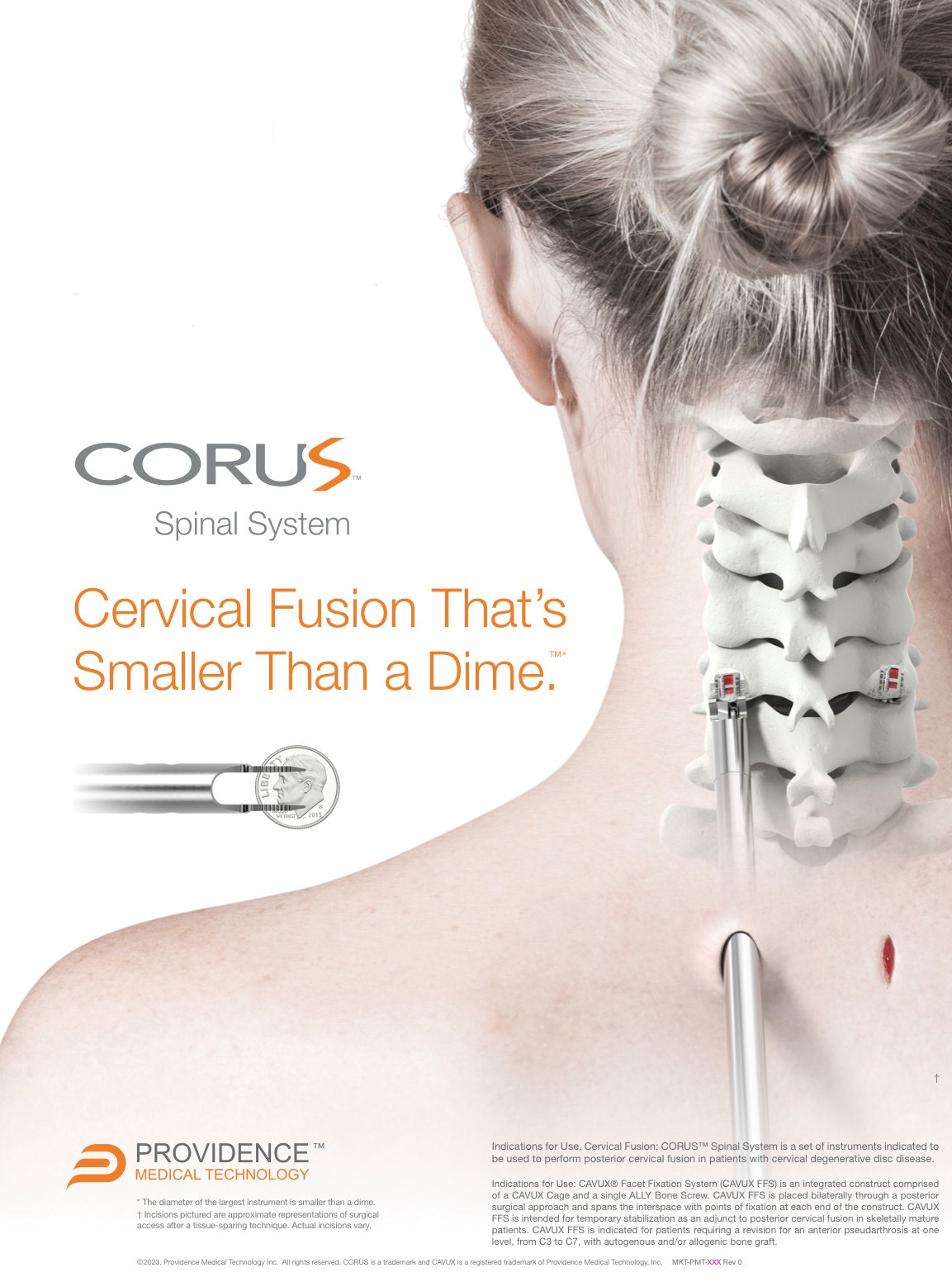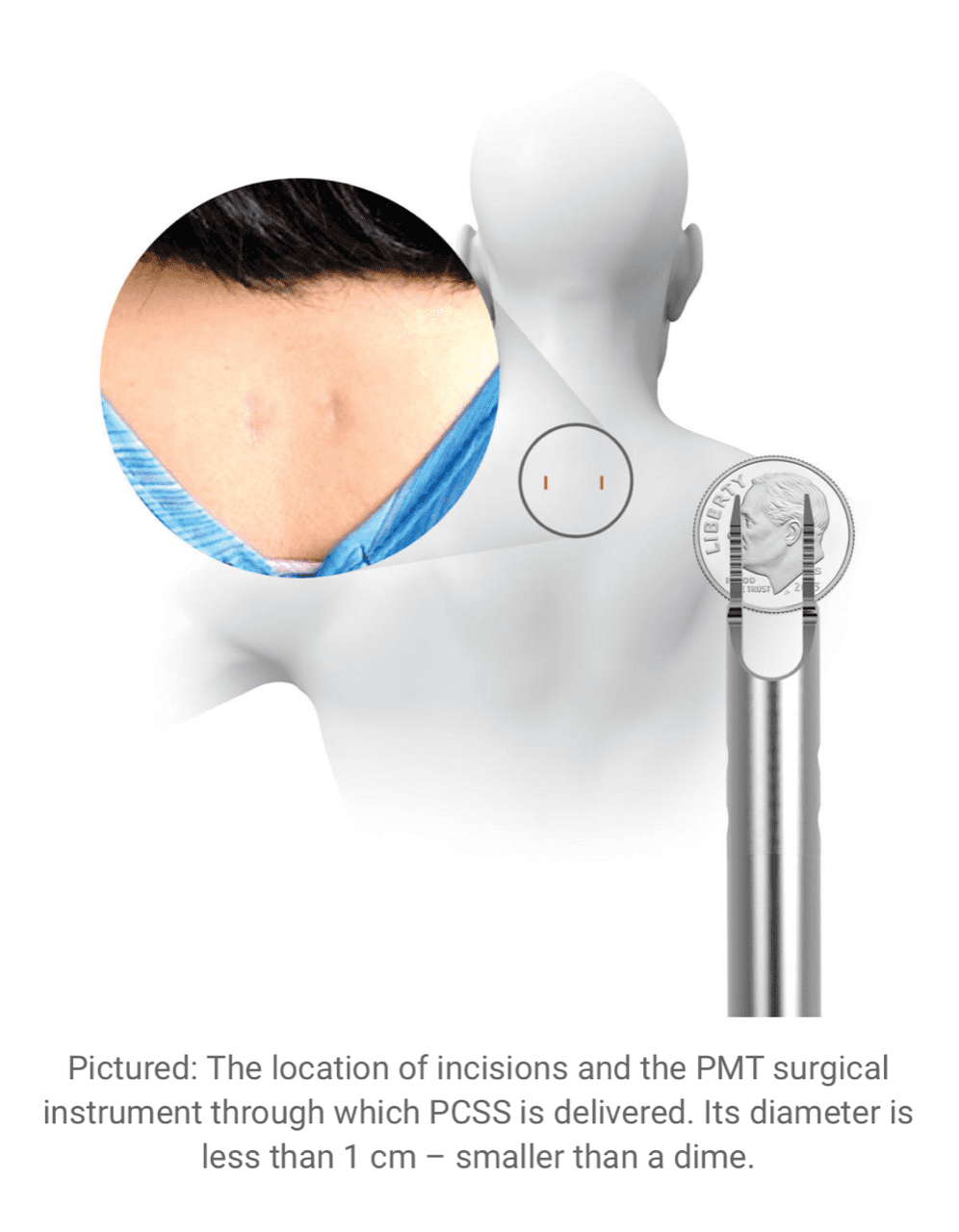What Is Minimally Invasive Posterior Cervical Fusion?
If you have neck pain and the pain is caused by facet arthritis or if you have radiating pain down your arm caused by nerve compression, then you may be a candidate for a minimally invasive posterior cervical fusion procedure, called CORUS.
Dr. Webb has a passion for minimally invasive procedures like the CORUS tissue-sparing posterior cervical fusion to deliver fast pain relief and recovery for patients who need spinal surgery.
You may be a candidate for this surgery if you:
- Have received at least six weeks of non-operative and conservative care.
- Suffer from pain, numbness or burning sensations in your neck, shoulders and/or arms from a pinched nerve caused by cervical foraminal stenosis
- Suffer from neck pain due to facet arthritis in your neck.
- Suffer from failed anterior fusion.
- Are a skeletally mature adult with degenerative disc disease of the neck (cervical spine levels C3-C7).



How does it work?
A set of surgical instruments, all smaller than one centimeter in diameter, are used to prepare the bony surfaces of the posterior cervical facet joint for fusion and allow grafts to be implanted. The fusion graft is then placed between the superior/inferior facet joint of the cervical spine, allowing for more space for pinched or irritated nerve roots. This facet joint will then fuse over time, eliminating the painful motion caused by the arthritis.
Why is a tissue-sparing approach so important with this procedure?
A tissue-sparing posterior cervical fusion can greatly reduce muscle and soft tissue trauma, scarring, time in surgery, blood loss, hospital stay, and patient recovery time. Often times, this can be done as an outpatient procedure. With smaller incision and decreased muscle stripping, this procedure preserves access to the anterior spine for future operations, if needed.
To see if you are a candidate for this procedure, please contact us today.
